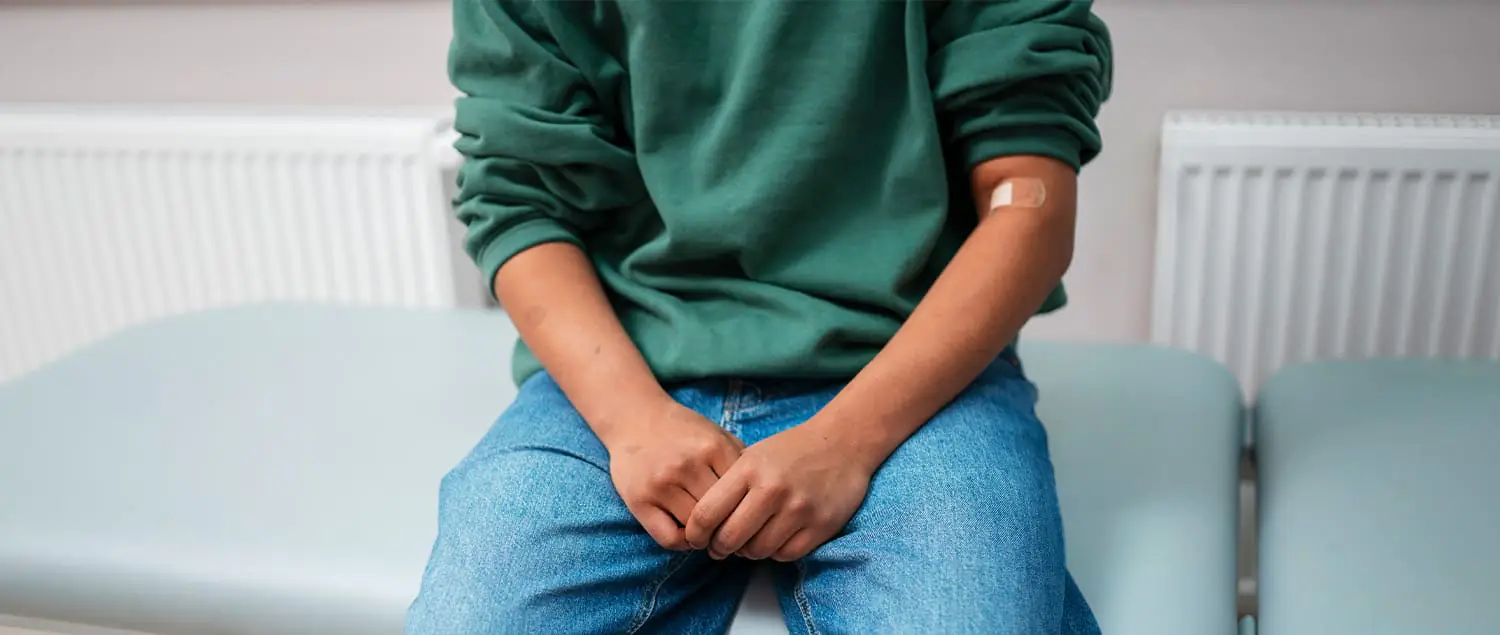
What is Hemorrhoids? What are the Symptoms of Hemorrhoids?
Hemorrhoids are a health problem in which irritation and swelling are experienced in the veins, also known as anal pads, located in the anus and lower part of the rectum. Patients with progressive symptoms experience bleeding and pain problems. The diagnosis is decided by using techniques such as rectal examination and anoscopy. Medication and life changes, including products such as painkillers and creams, can be used for treatment.
What is Hemorrhoids?
Hemorrhoids are experienced as a result of inflammation in the anal pads, which have functions such as ensuring the movement and retention of stool. The upper surface of the veins is irritated and swelling occurs. Depending on the area where irritation occurs, it can be categorized as internal and external. Obesity can be caused by conditions such as pregnancy, sitting for a long time. Further damage to the swelling during defecation can lead to an increase in the severity of the pain. Adding fibrous foods to the diet of people with hemorrhoids can be effective in reducing irritation. Increasing fluid consumption in this process can also be effective in relieving symptoms.
What are the Symptoms of Hemorrhoids?
After the formation of hemorrhoids, it manifests itself with some symptoms. Some of the symptoms of hemorrhoids can be listed as follows:
- Discoloration of the stool after defecation, blood on the napkin or underwear used for cleaning
- Swelling felt and increased pain as a result of the contact of these swellings with feces, pain
- Swelling and lump-like structures felt in and around the anus
- Itching in and around the anus
Depending on the area where the hemorrhoids occur, the symptoms may vary, but the effects may be similar depending on the size of the hemorrhoids.
Symptoms of Internal Hemorrhoids
In the type of hemorrhoids known as internal hemorrhoids, swelling occurs in the rectum. This type of hemorrhoids is usually not recognizable because it does not create a hemorrhoid appearance that can be noticed from the outside. Most of the time, it does not cause any symptoms. Some of the symptoms in patients with internal hemorrhoids are as follows:
- Especially in people with digestive problems such as constipation, bleeding is experienced with irritation that occurs in swelling during straining. In this case, there is no pain or pain. Red bright blood can be seen in the stool or on the napkin used to clean it.
- At the stage when internal hemorrhoids extend from the anal cavity to the outside, complaints of pain and pain can be seen. Swelling may be palpable after defecation due to sagging problems, also known as hemorrhoid nozzles. When it is said, “What does hemorrhoids mean?”, this is the picture that usually occurs in the minds of patients.
Symptoms of external hemorrhoids
External hemorrhoids are swellings that occur under the skin around the anus. It is a more painful picture compared to internal hemorrhoids. Symptoms of external hemorrhoids can be listed as follows:
- Redness and itching around the anal area
- Aches and pains
- Blood on underwear or the cloth used to clean
- Swelling in and around the anus
Thrombosed hemorrhoids are the condition in which blood accumulates in external hemorrhoids and a clot is formed. Swelling appears near the anus, darkened in color. Severe pain, swelling and inflammation may be observed. As the size of hemorrhoids containing clots increases, the pain felt also increases. Complaints worsen within 48 hours of its occurrence. Usually, after this period, the pain subsides on its own.
Stages of Hemorrhoids
After the formation of hemorrhoids, it is possible to divide it into some stages depending on changes such as the increase in complaints and worsening of symptoms. The stages of hemorrhoids can be grouped as follows:
- Stage 1: Anal fissures have formed, but there is no prolapse from the canal. At this stage, results can be obtained by regulating nutrition without drug treatment. In some patients, hemorrhoid creams can be applied to reduce swelling and pain.
- Stage 2: In this stage, hemorrhoids hang out of the canal during defecation, but at this stage, hemorrhoids can spontaneously return to the canal after defecation. At this stage, treatments using injections and infrared rays applied in the clinic can be applied.
- Rounds 3 and 4 Stage: As of the 3rd stage, the hemorrhoids that come out during straining can be pushed into the canal by hand. After the 4th stage, hemorrhoids remain completely outside the canal. At these stages, surgical interventions are needed for treatment. The healing process of surgical treatment is painful and arduous. The patient and the treating doctor need to act carefully. In this process, regular check-ups can be provided with an online doctor interview or on-site examination. In addition, the diet can be decided with online dietitian meetings.

How Does Hemorrhoids Pass?
Interventions applied in the hemorrhoid healing process can be grouped as life changes, drug treatments, light applications and surgical interventions. Depending on the progression of hemorrhoids, the severity of the intervention to be used also increases. Treatment of internal and external hemorrhoids is generally carried out by reducing the excess blood supply in the hemorrhoids. For the treatment of hemorrhoids, first of all, a doctor’s examination should be performed and medical treatment should be started as soon as possible. Some of the behaviors that can help to heal hemorrhoids are as follows:
- During the need for the toilet, care should be taken not to sit too much and not to strain. They can lead to the formation and increase of hemorrhoids.
- Sufficient water consumption should be ensured on a daily basis.
- A physically active life helps bowel movements to reach an adequate level.
- By increasing the amount of dietary fiber, it can help maintain gut health and motility.
How Is Hemorrhoids Treated?
Treatment of hemorrhoids may vary depending on the size of the swelling and conditions such as hemorrhoid bleeding. Some of the methods used for the treatment of hemorrhoids are as follows:
- Drug treatment: Drugs in the form of hemorrhoid suppositories, creams and gels are applied directly to the area. Medication in this form can be used to reduce pain and swelling. Such applications are generally preferred in hemorrhoids that do not sag out.
- Band ligation: It is aimed to reduce blood supply by placing a band on the head of the vein that causes hemorrhoids.
- Electrocoagulation: Blood flow is tried to be cut off by using electric current.
- Sclerotherapy: With chemicals injected into hemorrhoids, the appearance of hemorrhoids is tried to be eliminated.
- Surgical interventions: Stapling or cutting removal of hemorrhoids as surgical applications
What Should You Know About Hemorrhoid Surgery?
Hemorrhoid surgery is shaped depending on the patient’s condition and the expertise of the doctor. Surgical intervention is usually performed in patients where hemorrhoids protrude and do not return to the canal spontaneously. Depending on the size of the hemorrhoids and the size of the wound formed during the surgery, the wounds can be left open or closed. In the classical procedure of procedure, hemorrhoids are removed by cutting with a scalpel, after which the blood vessels are burned, sutured and closed. Care should be taken during the healing process so that the wounds are opened and bleeding does not occur.
What to Consider After Hemorrhoid Surgery
After hemorrhoid surgery, it is necessary to lead a life in which the intestines are less strained so that the stitches do not open and the hemorrhoid problem does not recur. Daily water consumption should be increased and foods that will not force the intestine should be consumed. Exercises that will not force the patient can be performed in order to prevent clot formation, which is the risk of surgical applications, and to ensure intestinal motility. Painkillers can be used with the recommendation of a doctor to reduce pain and suffering. Help can be obtained by using online health services for problems experienced during the healing process.
What Causes Hemorrhoids?
The formation of hemorrhoids is observed due to stretching and swelling of the vessels around the anus. Some of the reasons that increase the risk of hemorrhoids are as follows:
- Straining and straining during a bowel movement
- Sitting on the toilet for too long
- Digestive problems such as diarrhea and constipation that persist for long periods of time
- High weight
- Increase in blood pressure and other changes due to pregnancy
- Working in heavy jobs such as lifting loads
- Fiber-poor diet
- Anal sexual intercourse
What Is Good For Hemorrhoids?
In addition to medical treatment, some auxiliary interventions may be preferred for the healing of hemorrhoid problems. Some of the recommendations that are good for hemorrhoids are as follows:
- A diet rich in fiber and fluids can help reduce hemorrhoid problems.
- When constipation is a problem, the use of laxatives or products that will soften the stool can prevent the vessels from being strained during straining.
- After defecation, it can be massaged with light movements by taking some lotion on it or with cloths moistened with warm water.
- Regular exercise can improve gut health.
What Is Good For Hemorrhoid Pain?
Hemorrhoid pain is one of the conditions that cause hemorrhoids to be uncomfortable. For the treatment of pain, pain relieving creams and suppositories are usually applied into the anus. In addition, taking a steam bath on the container, where a warm water is regularly placed, can soften the area and reduce the pain. In addition, gently hitting the anus area after defecation with a clean cloth can reduce pain in the long run. Soft hemorrhoids can be preferred to relieve pressure.
What happens if hemorrhoids bleed?
Hemorrhoid bleeding is a normal symptom in patients in advanced stages. A small amount of bleeding is usually not a problem and is experienced due to irritation on hemorrhoids. High amounts of bleeding can lead to problems such as low blood pressure, anemia, and fainting. When blood and accompanying clots are seen, the nearest health institution should be consulted without wasting time.
What is the stage of thrombosed hemorrhoids?
Thrombosed hemorrhoids occur with blood collection inside the hemorrhoid structure, which can occur in internal and external hemorrhoids. Since there is no grouping that can be described as a stage in external hemorrhoids, it can be seen at any stage. In addition, internal hemorrhoids can be experienced in the 3rd and 4th stages during the protrusion of hemorrhoids. Manual pushing of the hemorrhoid may occur with blood leakage in the vein if the hemorrhoid located outside is irritated. It is a very painful and painful condition.
Which Doctor Should I Go to for Hemorrhoids?
If a patient with hemorrhoids has mild complaints, he can be treated by consulting a family doctor. For hemorrhoids in advanced stages, the intervention of a general surgeon may be required. In case of infection in patients who have undergone hemorrhoid surgery, an infection specialist or a dietitian can be consulted to establish a diet during the healing process. It is also possible to guide the patient by conveying his complaints through online doctor interviews.




